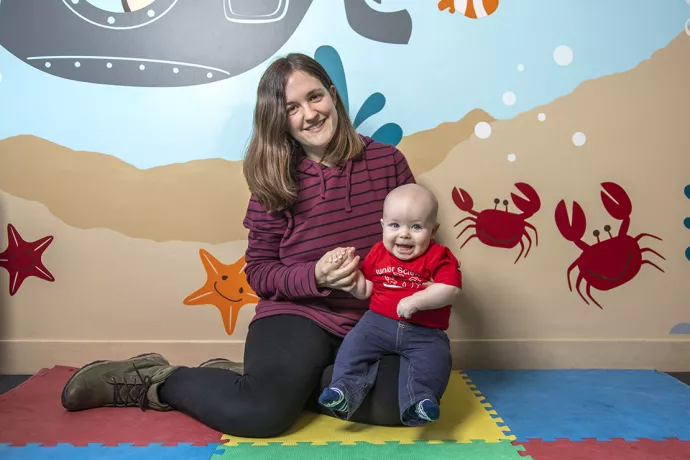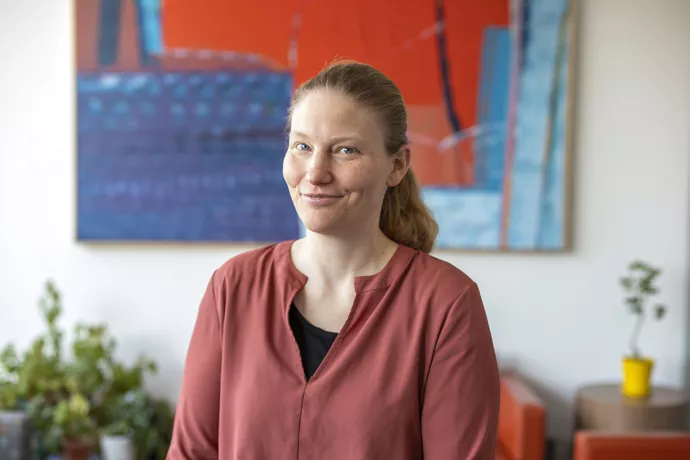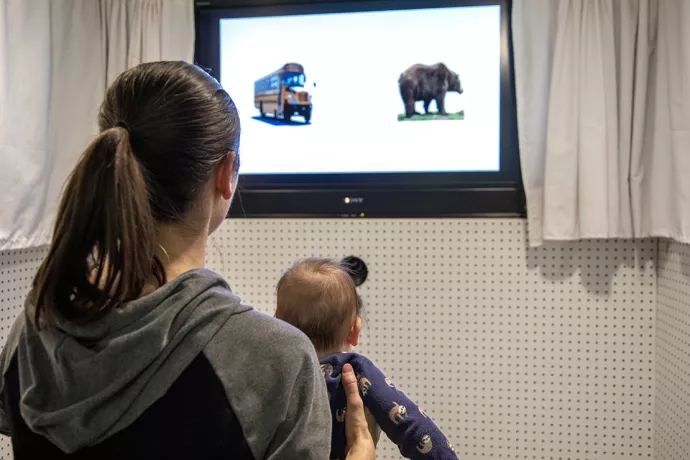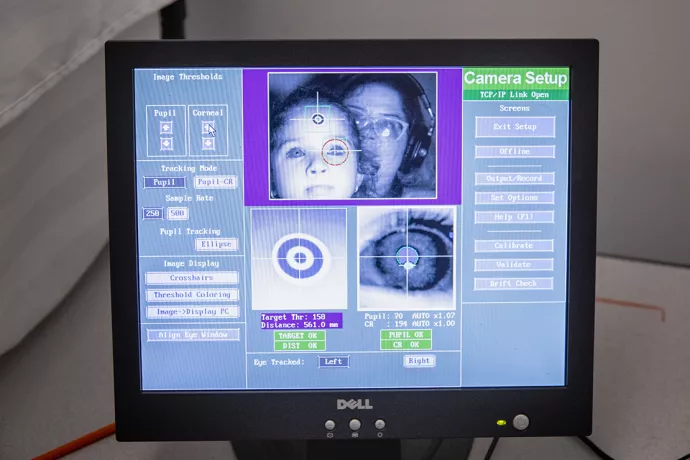
UTM child labs forge lasting community connections
Kendra Empey just can’t wait when the call comes from “Monsters University.”
She may be six-years-old now, but the Grade 1 student’s been experiencing university labs since she turned 18 months.
Her favourite study at U of T Mississauga’s Child Language and Speech Studies Lab (CLASS) is one she’s done for several years in the language development lab directed by Associate Professor Elizabeth Johnson.
“I taught the monsters (on the computer screen) how to pronounce words,” says Kendra proudly.
Kendra’s mom Anna explains, “They recorded her voice over several visits saying words with me to the monsters.” Spontaneously, mother and daughter happily rhyme off examples: dog, passport, airplane, leash, toothbrush.
“Every time there’s a call from UTM, I tell her, ‘You got a call back from Monsters University.’ She immediately wants to know what she’s doing and when she can go.”
The Empeys’ visits are part of an ongoing study where children’s and mother’s voices are recorded, then used in multiple research projects.

Johnson was drawn to UTM in 2007 because of the long-standing reputation of the child studies research program, one of the first established in Canada in 1973.
It’s a decision she doesn’t regret.
“This is the place to do human developmental work because the university and the leadership team really support it.”
The research wouldn’t flourish, however, without the enthusiasm of mothers like Anna and children like Kendra.
The partnership with the community is a critical element to the success of the psychology department’s four developmental science labs, (two in the CCT building and two in Deerfield Hall) which study everything from child development to seniors dealing with hearing loss to interaction with robots.
That partnership has already become multi-generational.
Anna, a 2005 UTM history major, brought her daughter because she enjoyed her own experience so much as a child.
Kendra’s grandmother, Helen Andrenacci taught kindergarten for 20 of her 31 years at the Toronto Catholic School Board. One doctoral student who visited Helen’s classroom studied twins who were learning two languages at home.
That sparked Helen’s pedagogical interest in language and she enrolled her daughter in the lab. Anna returned regularly until she “aged out.”

The “monsters” lab has informed several research projects, including a paper Johnson coauthored that brought children and moms back to the lab to listen to previous recordings of their voices. The study found children had difficulty identifying themselves.
Other questions the research broaches: how well can adults recognize children’s voices? When do children begin to sound like their parents? When do boys and girls begin speaking differently? What factors predict language skill development?
“My goal is to understand the mysteries of child language acquisition, which is in my mind one of the most remarkable feats achieved by mankind,” says Johnson, noting babies begin comprehending simple words like baby and dog as early as six to nine months.
Her work’s been able to show that five- month-olds already distinguish between English spoken in North America and Britain.
Other researchers had shown toddlers speak differently to their babysitter than to their preschool teacher. “In my lab we’re finding that same pattern of language development across a variety of learning environments, including children exposed just to Canadian English, to multiple versions of English and to more than one language.”
While getting her PhD at Johns Hopkins in psychology and brain sciences, the Canada Research Chair worked with birds and babies before concentrating solely on infants.
“Initially, I didn’t want to work with babies,” she confides. “How scientific can it be? They don’t look like they’re doing anything. In fact, it’s really challenging.”
She must find up to 100 four-month-old volunteers per study. The younger they are, the trickier it is to design experiments and collect data. Children can be in the lab 45 minutes for a two-minute test.
The key is making it fun.
“It can be frustrating if they’re having a bad day,” says Johnson, who is also a mother of two. “You need a different skill set. You have to think from a baby’s perspective and be creative and patient.”

Johnson’s on a mission to help the UTM community, and the broader one, appreciate the critical function of campus labs.
By demarcating language development milestones, the lab provides building blocks for a variety of other improvements in children’s lives, such as better screening to identify those who are delayed in reaching milestones, optimizing early childhood education, teaching ESL more effectively and improving speech therapy.
“Our labs specialize in whole lifespan development and working with the community,” Johnson says.
It helps that UTM is surrounded by a city with one of the most linguistically and culturally diverse populations in the world.
Keeping parents and children coming back is a critical factor in that link. The labs work hard at maintaining the connection.
Free designated parking spots, Saturday hours, Jr. Scientist T-shirts and onesies, mini-graduations with child-sized caps and gowns, Teddy bears, brightly-painted reception rooms where monkeys cavort across splashy wall murals – not to mention a life-sized stuffed monkey to cuddle with – all add to the allure.
Another lab baby of yesteryear, who currently brings her daughter back to the program, only faintly remembers the experiments but clearly remembers one indelible memento.
“I got a T-shirt that said ‘Class of 2000,’” says Beth Hughes, 44, who took part from 18 months until she was six or seven. “I wore that T-shirt until I was five. That was a big memory. When I was a kid I loved the experience.”
Hughes’ late mother Margaret ensured her daughters had a chance she was denied. “My Mom wasn’t able to go to college or university, so she had us contributing” at the lab.
When Hughes took her own maternity leave her participation was “a way to get out of the house, where you’re really isolated, while making a contribution to science.”
Parental newsletters explaining the purpose and results of labs reinforce her belief in their value. “When I see the impact, it makes me feel so proud to be part of the program.”
Johnson wants more alumni, staff and residents exposed to the opportunity.
The research questions she ponders are endless: How do children learn language so rapidly? How are languages so similar, yet so different? Why is human language so much more powerful and creative than other animals? Where does language come from?
“In a way, studying language is my way of studying what makes us human,” Johnson says. “I see language acquisition as one of the greatest mysteries of the world.”
This story first appeared in the Spring 2020 issue of M Magazine
